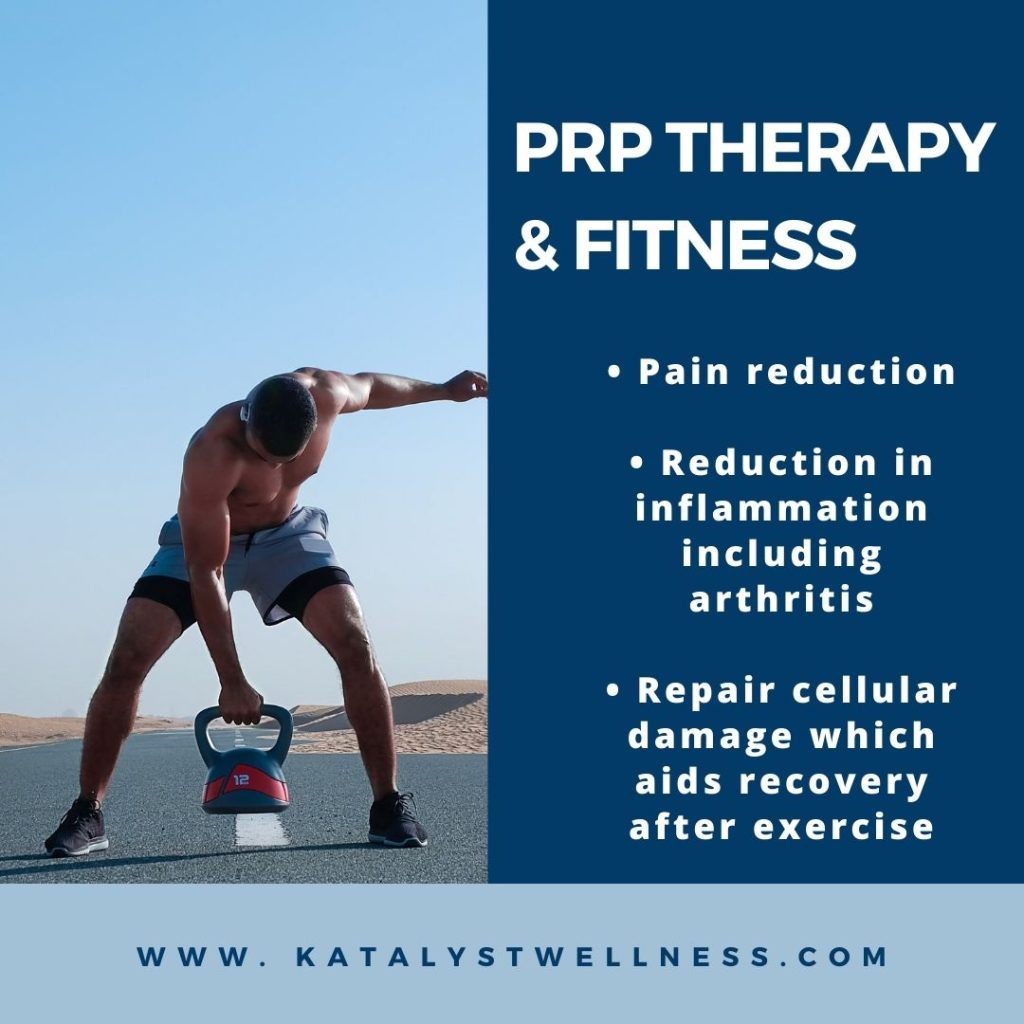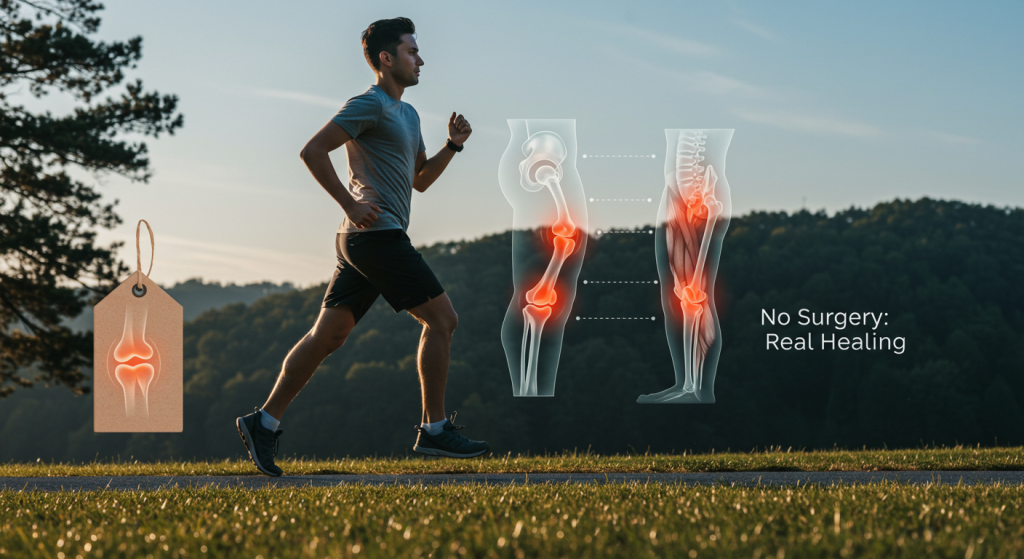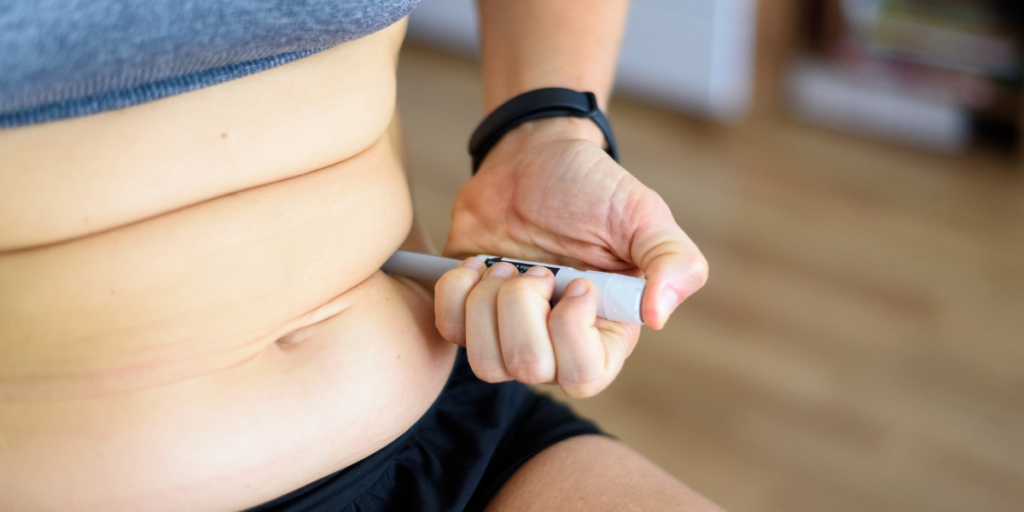When you’re dealing with joint pain or a sports injury, you want relief fast. But not all treatments are created equal.
Two of the most common options are PRP therapy and cortisone injections. Both involve needles. Both target inflammation.
But what they do inside your body and how long those results last couldn’t be more different.
So how do you know which is right for you?
Let’s break it down.
First, What Are We Talking About?
Cortisone Injections: Quick Fix
Cortisone is a synthetic steroid that mimics your body’s natural cortisol. It works by shutting down inflammation fast, which can provide short-term pain relief—sometimes in just a few days.
But here’s the catch:
- It doesn’t heal the injury.
- It can actually weaken tissues over time.
- And repeated injections? They come with serious side effects.
PRP Therapy: Long-Term Healing
Platelet Rich Plasma (PRP) is a regenerative treatment that uses your own blood to promote healing.
After processing your blood in a centrifuge, we isolate a super-concentrated layer of platelets (your body’s natural repair cells) and inject it into the damaged area.
The result?
- A biological healing cascade that reduces pain and rebuilds tissue.
- No foreign chemicals. No masking symptoms.
- Just your body, healing itself and becoming faster and stronger.
How Cortisone and PRP Work (and Why It Matters)
Cortisone is a powerful anti-inflammatory steroid. When injected into a painful joint or tendon, it quickly reduces swelling by suppressing your immune response. That’s why it feels good fast—but there’s a catch.
Cortisone doesn’t fix the underlying injury. In fact, over time it may:
- Slow down natural healing
- Break down collagen (the protein that gives tendons and ligaments strength)
- Thin cartilage, especially with repeated use
PRP, on the other hand, activates your body’s healing response. When injected, your own platelets release growth factors that:
- Stimulate new collagen production
- Attract stem cells to the injured area
- Reduce inflammation the natural way—without suppressing immune function
Cortisone calms things down. PRP builds things back up.
The Research Is Clear: PRP Wins Long Term
Recent clinical studies have shown that PRP outperforms cortisone for many common injuries, especially over time.
- Knee Osteoarthritis: A 2021 meta-analysis showed PRP provided significantly better pain relief and functional improvement at 6- and 12-month follow-ups compared to cortisone.
- Tennis Elbow: Studies have found that PRP leads to better long-term outcomes than steroid injections, which may feel better at first but wear off quickly.
- Rotator Cuff Injuries: PRP supports tissue regeneration and reduces re-injury risk—cortisone doesn’t.
Bottom line: If you want to feel better next week, cortisone can help.
If you want to stay better for the next year, PRP is the smarter choice.
Key Differences: PRP vs. Cortisone
| Category | Cortisone | PRP Therapy |
| What it does | Reduces inflammation temporarily | Stimulates long-term healing |
| Speed of relief | Fast (1–5 days) | Gradual (2–6 weeks) |
| Duration of results | Weeks to a few months | 12–18 months or more |
| Repeat use risks | High – can damage joints/tendons | Low – supports tissue regeneration |
| Treatment source | Synthetic steroid | Your own blood’s platelets and growth factors |
| Best for | Short-term flare-ups and acute inflammation | Chronic injuries, tendon damage, joint degeneration |
| Side effects | Tissue breakdown, increased injury risk, blood sugar spikes | Mild soreness, swelling, rare infection risk |
Which Is Right for You?
Here’s a general guide:
| Condition | Best Option |
| Acute flare-up (arthritis, gout) | Cortisone (short-term use) |
| Chronic tendinitis/tendon injury | PRP |
| Degenerative joint damage | PRP |
| Need fast relief for a big event | Cortisone (single dose) |
| Want to avoid surgery | PRP |
| Already had 2+ cortisone shots | PRP (before damage becomes worse) |

When Cortisone Might Make Sense
To be clear—cortisone isn’t evil. It has its place.
It can help if:
- You’re in severe pain and need immediate relief
- You’re dealing with an acute flare-up (like from arthritis or bursitis)
- You need a bridge while waiting for a longer-term plan (like PRP or surgery)
But cortisone should be used sparingly. It’s not designed for long-term healing—and repeated use can worsen the condition you’re trying to treat.
When PRP Is the Smarter Move
PRP is ideal if:
- You’ve been dealing with a chronic injury
- You want to fix the problem, not just numb it
- You’re an active person who wants to avoid surgery
- You’ve already tried rest, physical therapy, or cortisone—with limited success
We’ve used PRP to help patients heal from:
- Tendonitis
- Ligament sprains
- Meniscus or labral injuries
- Rotator cuff damage
- Plantar fasciitis
- Chronic joint degeneration
And more.
Why Choose PRP at Katalyst Wellness?
Not all PRP is created equal. At Katalyst, you’re getting:
- MD-Led Care – All injections are done by a board-certified physician, not a technician.
- Precision Guidance – Every injection is ultrasound-guided to ensure it hits the target.
- Comprehensive Strategy – We don’t just inject and hope. We diagnose, customize, and follow through.
- Real Results – Many patients avoid surgery, reduce pain long-term, and get back to training, pain-free.
???? Real Patients. Real Results.
“After three cortisone shots in my shoulder, the pain always came back—and worse each time. PRP at Katalyst changed everything. Within a few weeks, my range of motion improved, and now I’m back in the gym without pain. This was the first treatment that actually helped me heal, not just cope.”
— Jason M., 42, San Diego
“I was skeptical about PRP, but nothing else was working for my knee. The team at Katalyst explained everything clearly, and the ultrasound guidance made me feel safe. Two months later, I can hike again without limping. I only wish I’d tried it sooner.”
— Melissa R., 38, La Jolla
“Cortisone gave me short relief but never fixed the issue. PRP with Dr. Camhi didn’t just reduce my pain—it helped rebuild the tissue. I went from considering surgery to running a half marathon. This place knows what they’re doing.”
— Derrick T., 51, Carlsbad
The Bottom Line: Fix the Root, Don’t Mask the Pain
Cortisone can be helpful, but it’s a band-aid.
PRP is your body’s upgrade kit. It’s slower, but it works smarter and lasts longer.
If you’ve been stuck in a cycle of cortisone shots and physical therapy with no real progress, it might be time for something different.
Ready to Choose Healing Over Hiding?
Let’s talk. Schedule a consultation at Katalyst Wellness and find out if PRP is the better fit for your injury, your body, and your goals.
Skip the band-aids. Start healing for real.




